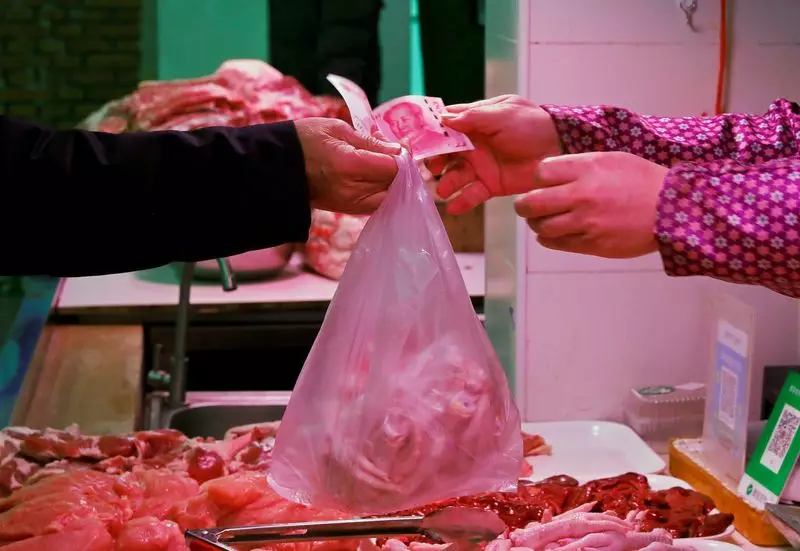In 2024, China’s economy finds itself at a critical juncture, exemplified by stagnant consumer prices and continuous deflation in factory-gate prices. Official data recently released revealed that the consumer price index (CPI) has only risen by a meager 0.2% over the course of the year. This figure not only mirrors the previous year’s performance but also falls well short of the government’s inflation target of approximately 3%. Such disappointing results underscore a broader trend, with the country experiencing a failure to meet its inflation goals for an alarming 13 consecutive years. At the end of December, the CPI experienced a minor gain of 0.1% year-on-year, the lowest increase recorded since April.
The rather bleak inflation landscape is compounded by a host of domestic issues, such as a persistent downturn in the housing market, rising debt levels, and overall job insecurity. These factors contribute significantly to weak consumer demand, despite the flurry of stimulus measures introduced by Beijing. The slow growth in consumer prices contrasts starkly with the economic aspirations of the Chinese government, which is under pressure to restore public confidence and invigorate consumer spending.
Producer Price Index Trends and Market Dynamics
The producer price index (PPI) presents a similarly somber picture, having declined 2.3% year-on-year in December, a slight improvement from 2.5% in November. This marks 27 continuous months of deflation in factory-gate prices, indicating a structural issue within the manufacturing sector. Julian Evans-Pritchard, Head of China Economics, interprets the marginal uptick in core consumer prices alongside the decelerated factory deflation as signs that government stimulus tactics might be yielding some positive effects on demand and pricing. However, he warns that this boost is likely to be fleeting, with expectations for a drop in underlying inflation as the year progresses.
The current dynamics of the market reveal a trend toward extensive discounting strategies across various sectors, from electric vehicle competitions to popular beverage outlets. This reflects a consumer base that has turned cautious, pivoting towards renting rather than purchasing, particularly for non-essential items like cameras and handbags. Such behaviors illustrate a broader sentiment of financial apprehension among consumers, who are navigating an uncertain economic atmosphere.
The Property Sector’s Lingering Ills
A notable factor weighing heavily on consumer sentiment is the ongoing struggles within the property sector. Analysts like Zhang Zhiwei, Chief Economist at Pinpoint Asset Management, voice concerns that the downturn in real estate has yet to be resolved, leading to sustained deflationary pressures in the economy. Mounting concerns regarding household and business confidence continue to overshadow even optimistic growth forecasts, including those recently upgraded by the World Bank for 2024 and 2025. Despite these revisions, the World Bank acknowledges the indisputable challenges posed by the property market’s inflammation.
Recognizing the urgency, Beijing has embarked on an unprecedented journey of fiscal intervention, authorizing a colossal $411 billion in special treasury bond insurance aimed at revitalizing the economy. This approach includes significant funding through ultra-long treasury bonds earmarked for business investments and initiatives designed to boost consumer activity. With $41 billion allocated for consumer goods enhancements and auto trade-ins as of July, the government is making concerted efforts to breathe life into the sputtering economy.
As China grapples with an economy marked by subdued consumer prices and the relentless grip of deflation, the outlook remains complex and uncertain. The interplay between government stimulus measures and the enduring challenges of the property market will be crucial in determining the trajectory of inflation and consumer confidence in the coming years. The success or failure of these strategies will ultimately shape not only the immediate economic landscape but also the long-term viability of China’s growth narrative in an increasingly challenging global environment.

